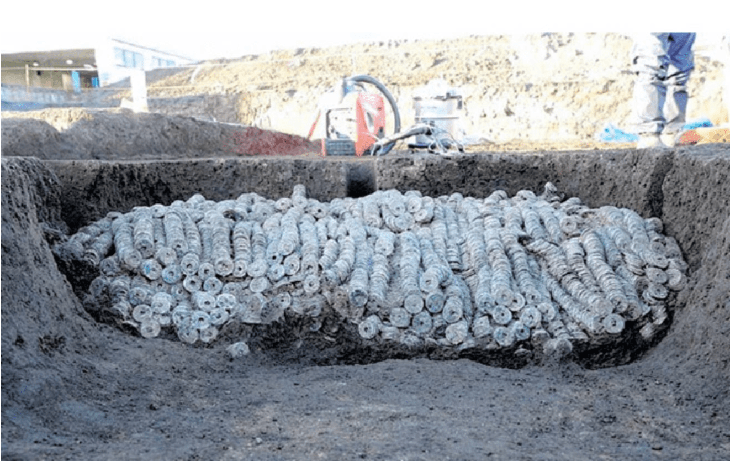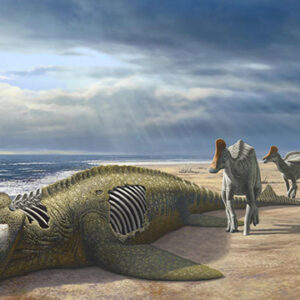
In the heart of Japan’s Kanto region, a remarkable discovery has unfolded beneath the surface of the Sojamachi district. City archaeologists stumbled upon a treasure trove of 100,000 ancient coins, a captivating find that traces its roots back an astonishing 2,000 years. This clandestine cache, concealed under a site earmarked for a factory construction project, represents a tangible link to the past, where many of these coins were minted in China, with some dating as far back as the Western Han Dynasty (220 BCE – 9 CE).
The excavation, detailed by the Japanese daily Asahi Shimbun, unveils a compelling narrative spanning centuries. Of the 100,000 coins unearthed, a mere 334 have been meticulously examined thus far, revealing a diverse array of 44 distinct types. This assortment spans the reign of Emperor Wendi (175 BCE) of the Western Han Dynasty to the more recent Kamakura Period (1185-1333). Although the report does not specify the materials used, the nature of the minting process and burial method strongly suggest that the majority, if not all, are composed of copper or bronze.
A captivating aspect of these ancient coins lies in their innovative design, a testament to Chinese ingenuity. Crafted from bronze and copper, each coin featured a distinctive hole in the middle, a practical innovation that served multiple purposes. Beyond the conservation of materials, the central perforation facilitated convenient transportation, storage, and counting. Coins could be effortlessly strung together using a rope made from straw or reeds, akin to a keychain, offering a glimpse into the functional brilliance of ancient currency systems.
The manner in which these coins were discovered adds an intriguing layer to the narrative. Carefully stacked and buried, there is a suggestion in the Asahi Shimbun report that the process may have been executed hastily. The site, identified as property once belonging to affluent members of medieval Japanese society in Maebashi, exudes an air of mystery. Each bundle uncovered in the excavation contained approximately 100 coins, with a grand total of 1,060 bundles unearthed. Traces of a straw mat further indicate that these coins were methodically bundled before being interred, perhaps pointing to ceremonial or ritualistic practices associated with their burial.
Amidst this treasure trove, the oldest coin, a Chinese ban liang, emerges as a poignant relic. The term “ban liang” is suggestive of “half pair” or “half bright,” denoting its origin from the initial set of coins minted in a unified China. This discovery adds a rich layer to the historical tapestry of the region, prompting further exploration into its significance and the civilization that once thrived there.
The excavation site in the Sojamachi district has not been devoid of other artifacts, fostering the belief that it was once a nexus of power for a bygone province known as Kozuke during the Kofun Period. As archaeologists continue to unravel the secrets concealed beneath the earth, this find sparks not only curiosity about the ancient monetary systems but also paints a vivid picture of the social, economic, and cultural dynamics of a civilization long faded into the annals of history. The ancient coins of Sojamachi, with their unique design and historical resonance, stand as tangible echoes of a bygone era, inviting scholars and enthusiasts alike to delve deeper into the mysteries they hold.
What are your thoughts? Please comment below and share this news!
True Activist / Report a typo


